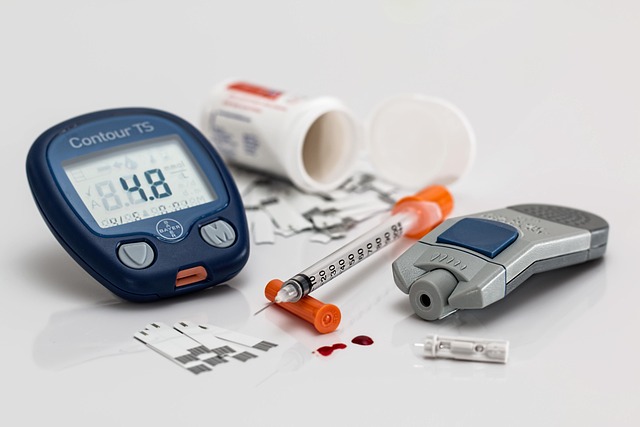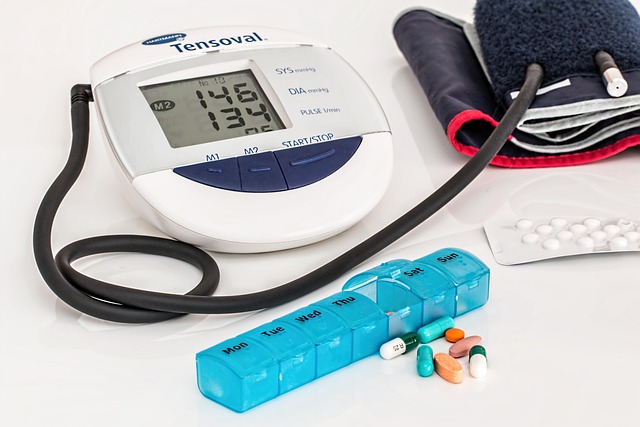Understanding NASH: Risk Factors and Management Strategies
Nonalcoholic steatohepatitis, commonly known as NASH, represents a serious form of liver disease that affects millions of people worldwide. Unlike simple fatty liver, NASH involves inflammation and liver cell damage that can progress to cirrhosis and liver failure if left untreated. As metabolic disorders and obesity rates continue to rise, understanding the risk factors, early identification methods, and comprehensive management strategies for NASH has become increasingly important for both healthcare providers and patients seeking to protect their long-term liver health.

Nonalcoholic steatohepatitis is a progressive liver condition characterized by fat accumulation, inflammation, and cellular injury in the liver without significant alcohol consumption. This condition sits on the severe end of the spectrum of nonalcoholic fatty liver disease and requires careful attention to prevent potentially life-threatening complications. The growing prevalence of NASH mirrors the global increase in metabolic syndrome, making awareness and early intervention critical components of modern healthcare.
This article is for informational purposes only and should not be considered medical advice. Please consult a qualified healthcare professional for personalized guidance and treatment.
NASH Risk Factors: A Comprehensive Overview
Several interconnected factors contribute to the development of NASH. Obesity stands as one of the most significant risk factors, particularly central obesity where excess fat accumulates around the abdomen. Type 2 diabetes and insulin resistance create metabolic conditions that promote fat deposition in the liver and subsequent inflammation. High cholesterol and elevated triglyceride levels further compound the risk by creating an environment conducive to liver damage.
Age plays a role as well, with individuals over 50 facing increased susceptibility. Metabolic syndrome, which combines multiple conditions including high blood pressure, abnormal cholesterol levels, elevated blood sugar, and excess abdominal fat, dramatically increases NASH risk. Genetic factors and family history can predispose certain individuals to develop the condition even with moderate risk factors. Additionally, certain medications, rapid weight loss, and specific medical conditions like polycystic ovary syndrome have been associated with higher NASH rates.
Identifying and Managing NASH
Early identification of NASH presents challenges because the condition often develops silently without noticeable symptoms in its initial stages. Many individuals discover they have NASH through routine blood tests showing elevated liver enzymes or during imaging studies performed for other reasons. When symptoms do appear, they may include fatigue, weakness, discomfort in the upper right abdomen, and unexplained weight loss.
Diagnosis typically involves a combination of approaches. Blood tests assess liver enzyme levels and rule out other causes of liver disease. Imaging techniques such as ultrasound, CT scans, or MRI can reveal fat accumulation and signs of liver damage. In some cases, a liver biopsy remains the gold standard for definitively diagnosing NASH and determining the extent of inflammation and fibrosis. Non-invasive tests like FibroScan have emerged as alternatives to assess liver stiffness and fat content without requiring tissue samples.
Management begins with addressing underlying risk factors through comprehensive lifestyle modifications. Healthcare providers typically develop individualized treatment plans based on disease severity, coexisting conditions, and patient-specific factors. Regular monitoring through follow-up appointments and repeat testing helps track disease progression and treatment effectiveness.
Lifestyle Modifications and Medical Interventions
Lifestyle changes form the cornerstone of NASH management. Weight loss of 7 to 10 percent of body weight has been shown to significantly improve liver inflammation and may even reverse some liver damage in certain patients. Achieving this through a balanced diet rich in vegetables, fruits, whole grains, and lean proteins while limiting processed foods, added sugars, and saturated fats creates a foundation for liver health.
Regular physical activity plays a crucial role, with recommendations typically including at least 150 minutes of moderate-intensity exercise per week. Activities like brisk walking, swimming, cycling, or strength training help reduce liver fat even independent of weight loss. Managing diabetes through proper glucose control, addressing high cholesterol with dietary changes or medications, and controlling blood pressure all contribute to slowing NASH progression.
Currently, no medications are specifically approved by regulatory agencies solely for treating NASH, though several are under investigation in clinical trials. Healthcare providers may prescribe medications to manage associated conditions like diabetes, high cholesterol, or obesity. Vitamin E has shown some benefit in specific patient populations, though its use requires medical supervision. Avoiding alcohol completely is strongly recommended, as even moderate consumption can accelerate liver damage in individuals with NASH.
| Treatment Approach | Provider Type | Key Features | Cost Estimation |
|---|---|---|---|
| Initial Consultation & Diagnosis | Hepatologist/Gastroenterologist | Comprehensive evaluation, blood work, imaging | $300-$800 per visit |
| Nutritional Counseling | Registered Dietitian | Personalized meal planning, ongoing support | $100-$200 per session |
| Fitness Programs | Certified Personal Trainer/Gym | Structured exercise plans, supervision | $50-$150 per session |
| Diabetes Management | Endocrinologist | Medication management, glucose monitoring | $200-$500 per visit |
| Liver Imaging (Ultrasound/FibroScan) | Radiology Centers | Non-invasive liver assessment | $200-$1,000 per scan |
Prices, rates, or cost estimates mentioned in this article are based on the latest available information but may change over time. Independent research is advised before making financial decisions.
Multidisciplinary Approaches and Future Directions
Effective NASH management often requires coordination among multiple healthcare specialists. Hepatologists or gastroenterologists provide specialized liver care, while endocrinologists manage diabetes and metabolic conditions. Registered dietitians offer expert nutritional guidance tailored to liver health, and mental health professionals can address the psychological aspects of chronic disease management and lifestyle change.
Bariatric surgery may be considered for individuals with severe obesity when other weight loss methods have not succeeded. This intervention can lead to substantial improvements in liver health, though it carries surgical risks that must be carefully weighed. Support groups and patient education programs provide valuable resources for individuals navigating the challenges of living with NASH.
Research continues to advance our understanding of NASH and potential treatments. Numerous pharmaceutical compounds are in various stages of clinical trials, targeting different aspects of the disease process including inflammation, fibrosis, and metabolic dysfunction. Gene therapy and personalized medicine approaches hold promise for future treatment options. Improved diagnostic tools that can accurately assess disease severity without invasive procedures are also under development.
The landscape of NASH treatment continues to evolve as scientists uncover more about the complex mechanisms driving this condition. Staying informed about the latest research and maintaining open communication with healthcare providers ensures patients receive the most current and effective care strategies.
Managing NASH requires commitment to long-term lifestyle changes, regular medical monitoring, and addressing all contributing health factors. While the condition presents serious risks, early identification and comprehensive management can significantly improve outcomes and quality of life. By understanding risk factors and actively participating in treatment plans, individuals with NASH can take meaningful steps toward protecting their liver health and overall wellbeing.




